Defensive, antimicrobial, and insecticidal gland secretion in the Bornean ant Colobopsis explodens

In the recent article “Strong antimicrobial and low insecticidal activity of mandibular gland reservoir content in Bornean ‘exploding ants’ Colobopsis explodens Laciny & Zettel, 2018 (Hymenoptera: Formicidae)”, Michaela Hönigsberger et al. study the potentially toxic chemicals that C. explodens ejects when threatened. Not only it is a defense mechanism against enemies but likely also an antimicrobial agent. Here, Michaela highlights the main points of their study and shares some pictures.
An Interview compiled by Patrick Krapf, Felix Oberhauser, Sheethal Vepur

MNB: Could you tell us a bit about yourself?
MH: My name is Michaela Hönigsberger, I am 34 years young and I am from Austria. I have completed my master’s degree in Molecular Biology with focus on immunology, microbiology, neuroscience, and molecular medicine at the University of Vienna. In 2014, I started my PhD studies at the University of Natural Resources and Life Sciences (BOKU Vienna), more precisely at the Institute of Bioanalytics and Agro-Metabolomics, which belongs to the Department of Agrobiotechnology (IFA-Tulln). There, I have developed my passion for ants, especially for the numerous chemical compounds they use for communicating with their environment. Under the supervision of Rainer Schuhmacher, I have learned the techniques of gas chromatography and mass spectrometry (GC-MS), which together are powerful tools for the analysis of such compounds. Within the scope of the PhD project, I also had the chance to investigate “exploding ants” in their natural habitat in Brunei. Moreover, I got married and gave birth to my son. Currently, I am about to finalize the written part of my PhD thesis and am also employed at the Institute of Science and Technology (IST Austria), where I again can follow my passion of working with ants and their chemicals. Thus, I would consider myself as an (ongoing) chemical ecologist, who is trying to build bridges between the biology and the chemistry of ants.

Working in the lab in Vienna. (© Alexey Kopchinskiy) 
Working in the lab in Vienna. (© Alexey Kopchinskiy)
MNB: Could you briefly outline your research you published in Myrmecol. News in layman’s terms?
MH: The ants we have worked with show a unique feature: One of their body glands is greatly enlarged and filled with a colored secretion. When they are threatened, they can eject this secretion via different methods. Some species do it via their mouth openings, but some species even go further – they can expel this secretion via a suicidal “explosion”, in which they burst their gaster. The sticky defensive secretion is then spread onto the enemies, which subsequently are made innocuous. In the recent studies, we aimed to widen the knowledge about this fascinating insect secretion and its possible roles for the ants and their environment. Our model ant species was the recently described species Colobopsis explodens (Laciny & Zettel, 2018), which is known for its “explosive” character. First, we wanted to know if their secretion can kill the targeted opponents by deadly toxic chemicals. Therefore, we observed the effects of the secretion on the enemies, in the natural environment. In the lab, we then also applied the prepared secretion, as well as two of its identified chemicals onto diverse insects, and looked for their death or survival. In another approach, we wanted to find out if the secretion serves a further role than just defense. Specifically, we wanted to know if the secretion shows antimicrobial effects and thus may be used for hygienic purposes by the ants. We, therefore, cultivated diverse bacteria and fungi and observed their growth under the presence of the secretion or its main chemicals.
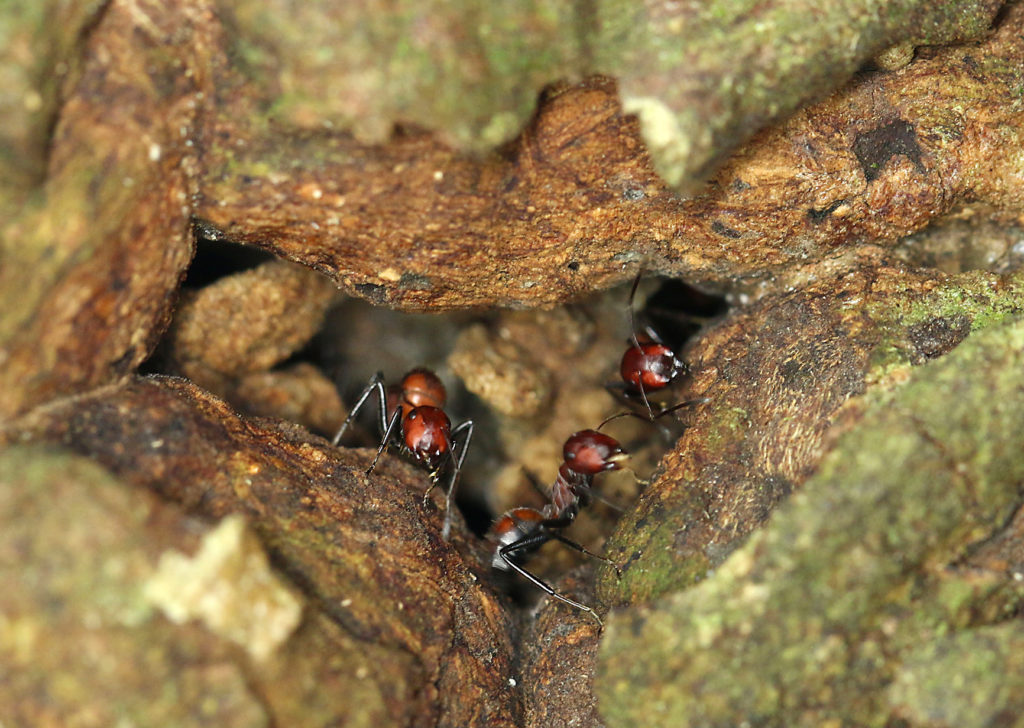
MNB: What is the take-home message of your work?
MH: We showed that the secretion, when used by C. explodens against arthropod enemies, mainly acts via its stickiness, and not via deadly toxic chemicals. However, the secretion as a whole, and especially one of the investigated chemical compounds, showed profound antimicrobial activity. This means that the secretion may not only be used for defense, but may also serve an additional role as a disinfection agent, which can be used by the ants to keep their nests free of harmful bacteria and fungi.
Confrontation between C. explodens (the smaller, brownish ant) and another ant. (© Alexey Kopchinskiy)
MNB: What was your motivation for this study?
MH: The motivation for our interdisciplinary project group, led by Irina Druzhinina, was to investigate different aspects of the “exploding ants”, including their taxonomy, evolution, ecology, chemistry and nutrition. With this study, we wanted to add some pieces to the complex overall picture depicting the interactions of these ants with their environment, specifically with their microbiome.
MNB: What was the biggest obstacle you had to overcome in this project?
MH: Definitely the procurement of the ant samples. The process started with the paperwork that had to be done to get all the necessary documents and permits. Fortunately, we had great support with this from colleagues at the Universiti Brunei Darussalam. Also, travelling to the remote jungle area and doing research there was quite challenging. Most of our ants had to be collected from the densely overgrown canopy of the rainforest. Luckily, we had a professional tree climber in the team who facilitated the task of sampling the ants on the very large trees. Next, we had to overcome the issue with the cooling and transportation of the samples. For this, a sophisticated protocol was established to ensure continuous freezing of the ants from their sampling in the jungle to their analysis in Austria.

Field station in Borneo. (© Alexey Kopchinskiy) 
Field station in Borneo. (© Alexey Kopchinskiy)
MNB: Do you have any tips for others who are interested in doing related research?
MH: When you are doing research on complex biological systems, do not become desperate if you cannot see the whole picture at first. Also, try to make your research tangible for everyone and try to transfer your excitement about it to the people around you. I have had the experience that many people are fascinated by ants, and even by their chemistry when they have the chance to get to know more about them.
MNB: Where do you see the future for this particular field of ant research?
MH: I see a big potential in the field of chemical ecology, because it is an interdisciplinary field with lots of open research questions to be answered. I would like to see more research on insect secretions, because they may be hitherto unexplored sources for bioactive compounds with potential benefits for humans.
Wanna learn more about this project? Check out their homepage!

Field work in Borneo. (© Alexey Kopchinskiy) 
Field work in Borneo. (© Alexey Kopchinskiy)

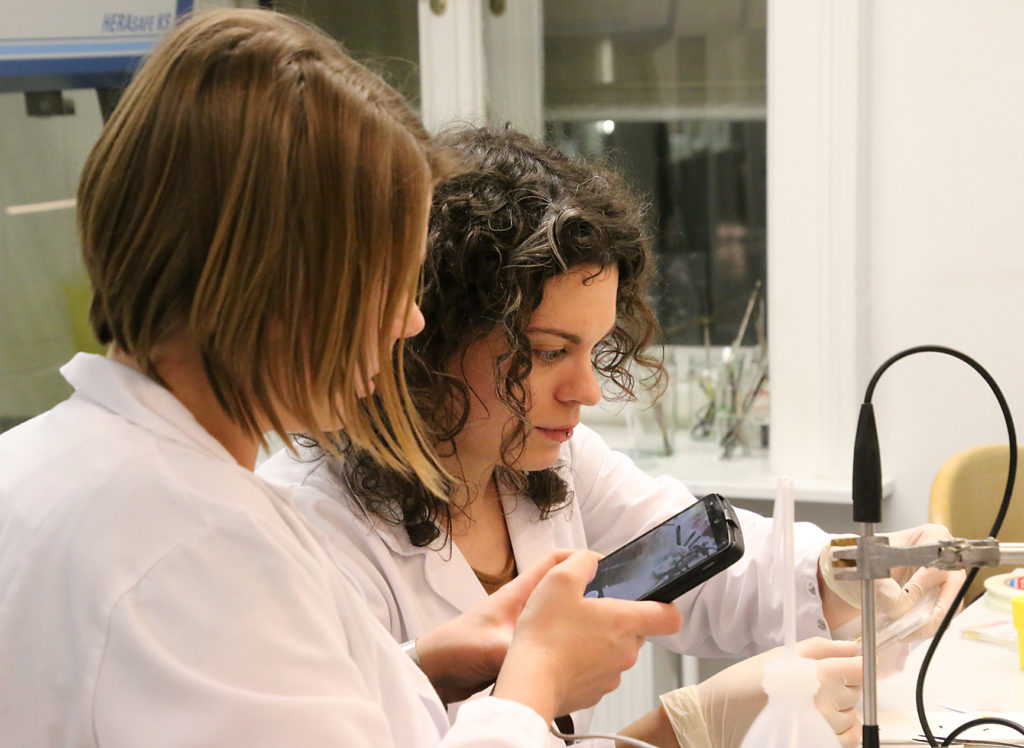
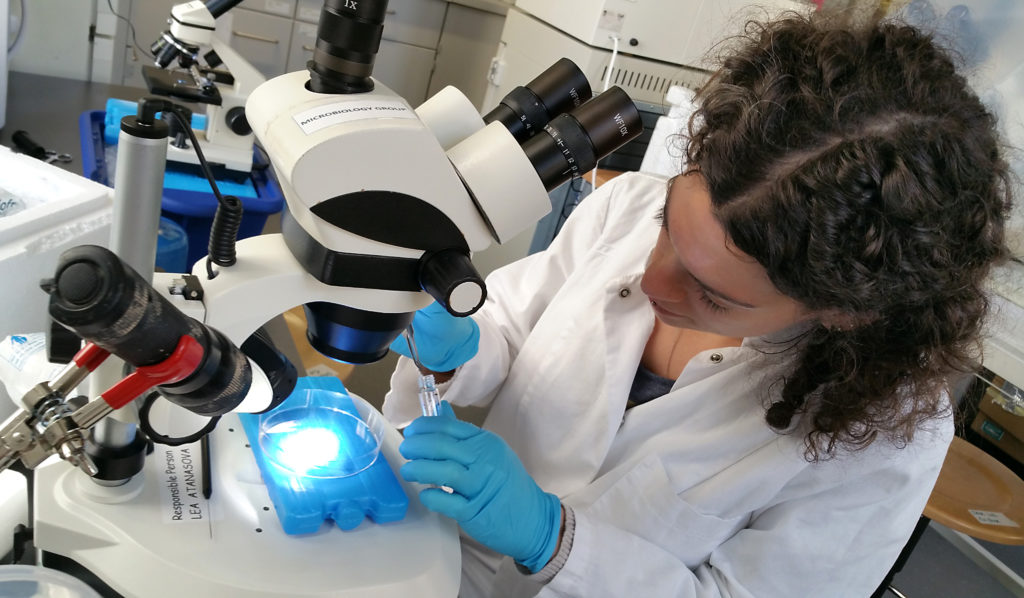
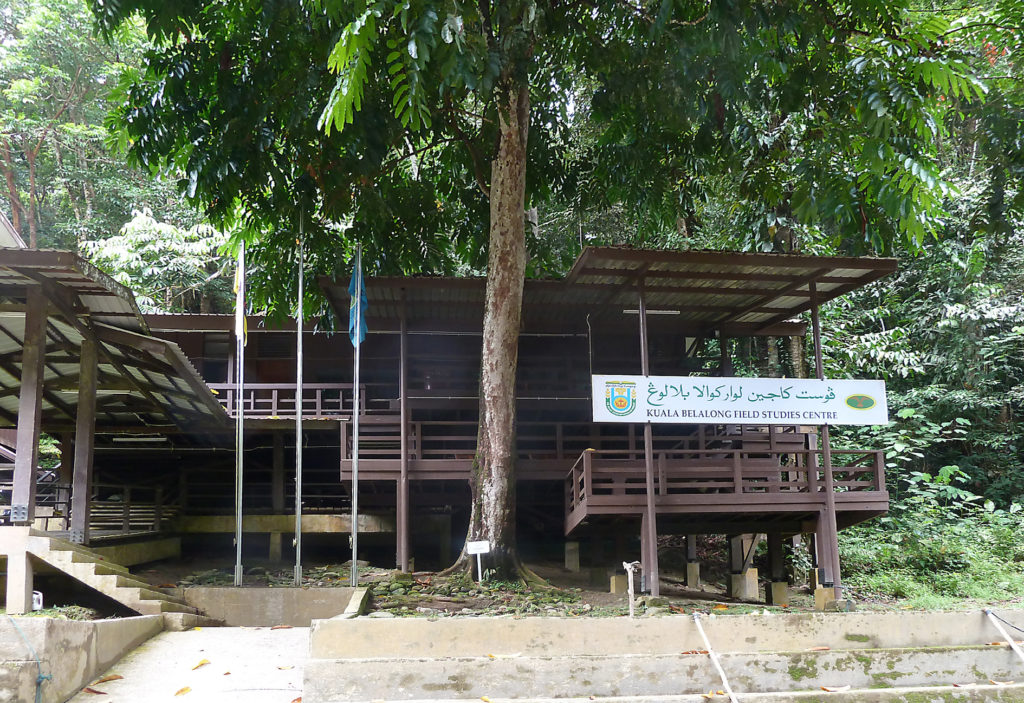
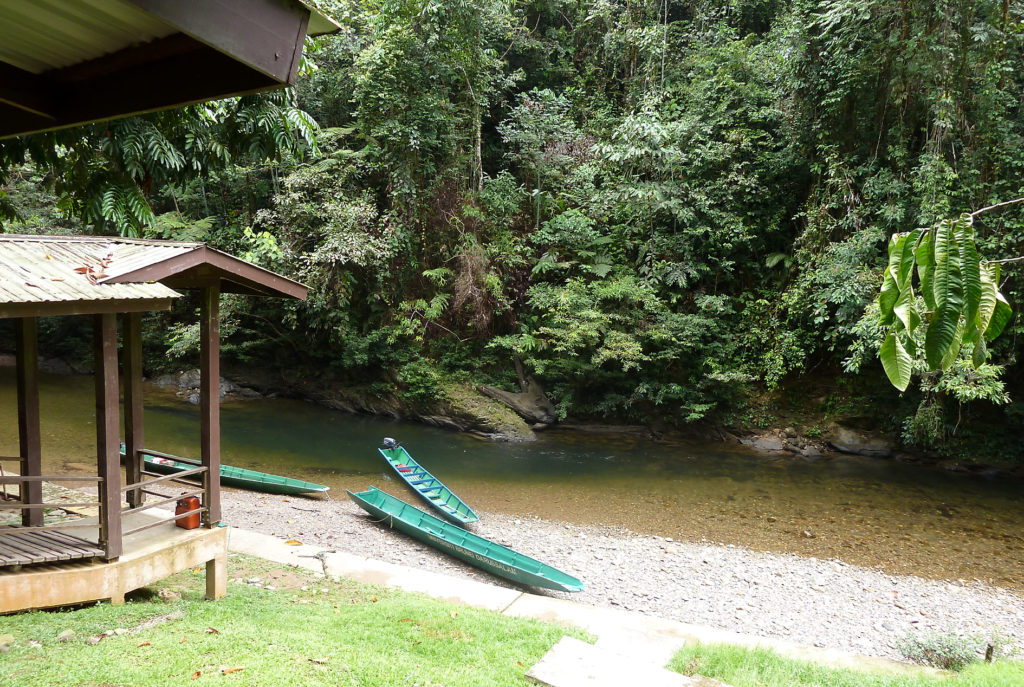
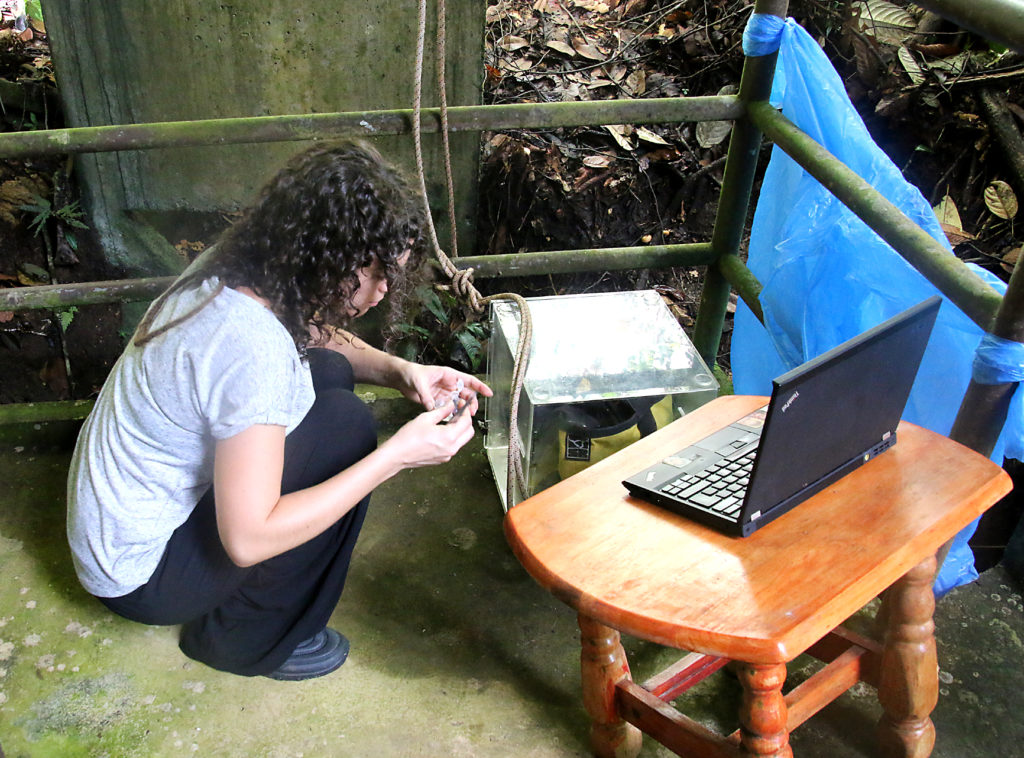




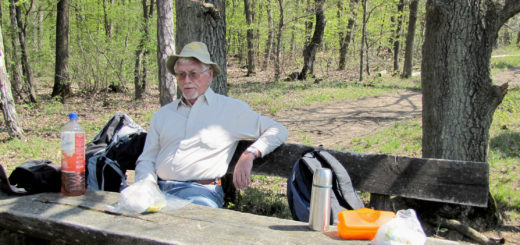
Recent Comments